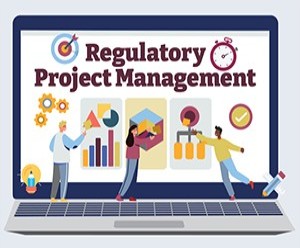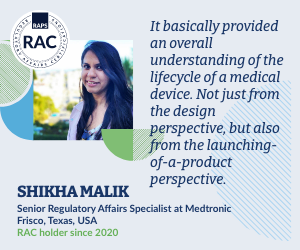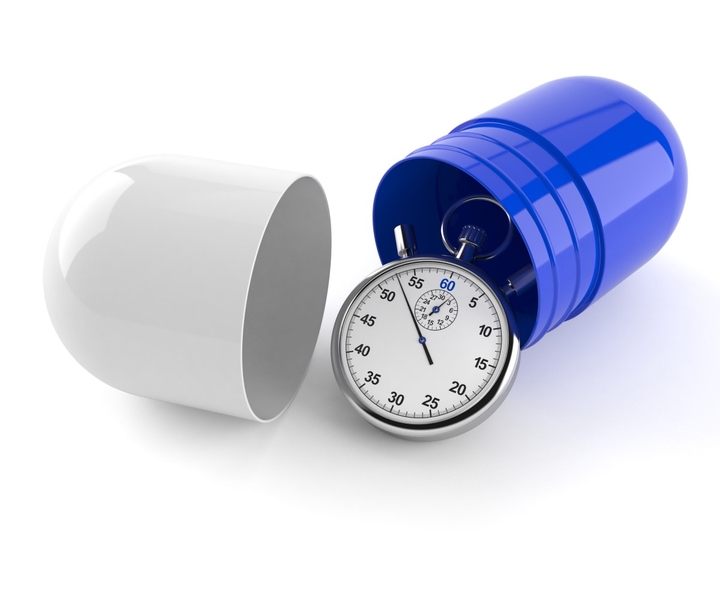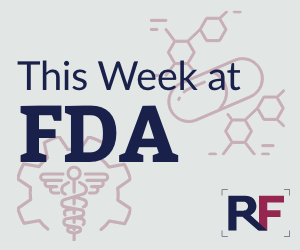Stakeholders ask for more time to transition EUA devices, diagnostics
![]() Regulatory News | 25 March 2022 |
Regulatory News | 25 March 2022 |
Responding to two US Food and Drug Administration (FDA) draft guidances on transitioning products granted emergency use authorization (EUA) during the pandemic to regular marketing authorizations, key stakeholders raised concerns the agency isn’t providing enough time to collect the necessary data or make labeling changes after the current public health emergency (PHE) is over.
In December, FDA published two much-anticipated draft guidances titled, “Transition Plan for Medical Devices That Fall Within Enforcement Policies Issued During the Coronavirus Disease 2019 (COVID-19) Public Health Emergency,” and “Transition Plan for Medical Devices Issued Emergency Use Authorizations (EUAs) During the Coronavirus Disease 2019 (COVID-19) Public Health Emergency.” If finalized, the guidances state that products currently marketed with EUAs would need to submit premarket applications and change their product labeling within 180 days of the end of the PHE. (RELATED: FDA proposes 180-day transition before terminating COVID-19 EUAs, enforcement policies, Regulatory Focus 4 January 2022)
Several stakeholders commented that is not enough time for manufacturers to comply.
Limbix, developer of a mental health app to treat depression, said FDA’s proposal may seem sufficient on the surface but 180 days isn’t enough time for manufacturers to collect clinical data needed to keep their product on the market.
“We are concerned that due to the challenges of running well-controlled clinical trials in the pediatric population and the time frame from submission to acceptance, along with the number of potential submissions that will require FDA review during this time frame, 180 days may not be adequate,” the company said. “We ask that FDA either extend that time frame to a minimum of 12 months or allow for case-by-case consideration of an extension for manufacturers who are working in good faith towards FDA clearance as indicated by having completed a pre-submission meeting with the FDA and/or are in the midst of a clinical trial to demonstrate device safety and effectiveness.”
“This will allow manufacturers to continue to meet the needs of the providers and patients that have so far benefited from their devices without interruption as they work towards FDA clearance during these challenging times,” Limbix added.
Medtech industry group AdvaMed focused on the FDA’s requirement that EUA manufacturers either remove their product from shelves or update their labeling to indicate the product is undergoing regulatory review and isn’t yet FDA-approved. The group says the agency has greatly underestimated the amount of time and effort it takes to update product labeling, and instead proposes manufacturers be allowed to update their labeling electronically for consumers to get additional information.
“Based on previous years’ manufacturer experience with labeling updates, total average burden associated with labeling mitigation for reusable devices will be 30 hours (for electronic labeling) or 60 hours (for physical labeling) in contrast to 1.25 hours cited in the proposed FR notice,” said AdvaMed. “Please note these are conservative estimates and time may be up to 4X more depending on the device and context with burden substantially more onerous than the time burden projections provided by FDA.”
The industry groups said they don’t think FDA took into consideration how labor-intensive it is to update labeling, including internal review processes and logistical needs to distribute labeling.
AdvaMed added that FDA’s proposal to require labeling changes twice, once during FDA’s review of an EUA trying to get regular marketing authorization and then after it’s received a decision, is “excessively onerous." The group said they think the process will also be confusing to users about the status of products.
Allowing manufacturers to simply post their EUA label updates on their website instead of physically on their products, AdvaMed said, would substantially reduce the burden on companies while increasing timely and accurate information about the product to consumers.
“We propose for ‘publicly available labeling’ that FDA allow for alternative electronic mechanisms for notification of updated labeling, including providing a mechanism on a manufacturer’s website for customers to request the updated labeling,” the group said. “We also propose that the recommendation for physical copy of labeling for reusable life-supporting and life-sustaining devices can be adequately met where a manufacturer provides electronic labeling to its customers and affords customers with the opportunity to request physical labeling. Furthermore, in order to mitigate customer confusion regarding the status of the device, we recommend that the Agency remove the proposed requirement for EUA devices with subsequent marketing submissions that are pending review to update labeling to state that the device remains under FDA review for clearance or approval.”
The American Clinical Laboratory Association (ACLA) also wrote to clarify that their member products are not going to be regulated under the guidances proposed by the FDA. While the agency has long sought to regulate laboratory developed tests (LDTs), the agency has used its enforcement discretion to refrain from doing so. Past efforts to develop guidance to use a risk-based approach to regulating LDTs have also failed after hitting political hurdles, though lawmakers are working on legislation to give the FDA explicit authority to oversee the sector.
In its comment, ACLA notes that since LDTs are not considered devices distributed by laboratories the provisions in the guidances do not apply to their members.
“ACLA interprets FDA’s silence on this issue as an acknowledgement by the agency that, once the EUA declaration is terminated, the regulatory posture for such tests will revert to the norm,” the group said. “That is, such tests will be subject to enforcement discretion like other LDTs.”
“However, notwithstanding ACLA’s understanding, we request that FDA clarify in the final guidance that following the termination of the relevant EUA Declaration for diagnostics, COVID-19 LDTs will be subject to FDA’s general policy of enforcement discretion for LDTs,” it added. “This would mean that laboratories that currently offer COVID-19 LDTs pursuant to EUAs need not submit any additional ‘marketing submission’ to FDA to continue offering such tests once the EUA Declaration is terminated. Further, high-complexity laboratories that develop COVID-19 LDTs pursuant to appropriate CLIA requirements after the EUA Declaration is terminated need not seek marketing authorization from FDA to offer such tests.”
In December, FDA published two much-anticipated draft guidances titled, “Transition Plan for Medical Devices That Fall Within Enforcement Policies Issued During the Coronavirus Disease 2019 (COVID-19) Public Health Emergency,” and “Transition Plan for Medical Devices Issued Emergency Use Authorizations (EUAs) During the Coronavirus Disease 2019 (COVID-19) Public Health Emergency.” If finalized, the guidances state that products currently marketed with EUAs would need to submit premarket applications and change their product labeling within 180 days of the end of the PHE. (RELATED: FDA proposes 180-day transition before terminating COVID-19 EUAs, enforcement policies, Regulatory Focus 4 January 2022)
Several stakeholders commented that is not enough time for manufacturers to comply.
Limbix, developer of a mental health app to treat depression, said FDA’s proposal may seem sufficient on the surface but 180 days isn’t enough time for manufacturers to collect clinical data needed to keep their product on the market.
“We are concerned that due to the challenges of running well-controlled clinical trials in the pediatric population and the time frame from submission to acceptance, along with the number of potential submissions that will require FDA review during this time frame, 180 days may not be adequate,” the company said. “We ask that FDA either extend that time frame to a minimum of 12 months or allow for case-by-case consideration of an extension for manufacturers who are working in good faith towards FDA clearance as indicated by having completed a pre-submission meeting with the FDA and/or are in the midst of a clinical trial to demonstrate device safety and effectiveness.”
“This will allow manufacturers to continue to meet the needs of the providers and patients that have so far benefited from their devices without interruption as they work towards FDA clearance during these challenging times,” Limbix added.
Medtech industry group AdvaMed focused on the FDA’s requirement that EUA manufacturers either remove their product from shelves or update their labeling to indicate the product is undergoing regulatory review and isn’t yet FDA-approved. The group says the agency has greatly underestimated the amount of time and effort it takes to update product labeling, and instead proposes manufacturers be allowed to update their labeling electronically for consumers to get additional information.
“Based on previous years’ manufacturer experience with labeling updates, total average burden associated with labeling mitigation for reusable devices will be 30 hours (for electronic labeling) or 60 hours (for physical labeling) in contrast to 1.25 hours cited in the proposed FR notice,” said AdvaMed. “Please note these are conservative estimates and time may be up to 4X more depending on the device and context with burden substantially more onerous than the time burden projections provided by FDA.”
The industry groups said they don’t think FDA took into consideration how labor-intensive it is to update labeling, including internal review processes and logistical needs to distribute labeling.
AdvaMed added that FDA’s proposal to require labeling changes twice, once during FDA’s review of an EUA trying to get regular marketing authorization and then after it’s received a decision, is “excessively onerous." The group said they think the process will also be confusing to users about the status of products.
Allowing manufacturers to simply post their EUA label updates on their website instead of physically on their products, AdvaMed said, would substantially reduce the burden on companies while increasing timely and accurate information about the product to consumers.
“We propose for ‘publicly available labeling’ that FDA allow for alternative electronic mechanisms for notification of updated labeling, including providing a mechanism on a manufacturer’s website for customers to request the updated labeling,” the group said. “We also propose that the recommendation for physical copy of labeling for reusable life-supporting and life-sustaining devices can be adequately met where a manufacturer provides electronic labeling to its customers and affords customers with the opportunity to request physical labeling. Furthermore, in order to mitigate customer confusion regarding the status of the device, we recommend that the Agency remove the proposed requirement for EUA devices with subsequent marketing submissions that are pending review to update labeling to state that the device remains under FDA review for clearance or approval.”
The American Clinical Laboratory Association (ACLA) also wrote to clarify that their member products are not going to be regulated under the guidances proposed by the FDA. While the agency has long sought to regulate laboratory developed tests (LDTs), the agency has used its enforcement discretion to refrain from doing so. Past efforts to develop guidance to use a risk-based approach to regulating LDTs have also failed after hitting political hurdles, though lawmakers are working on legislation to give the FDA explicit authority to oversee the sector.
In its comment, ACLA notes that since LDTs are not considered devices distributed by laboratories the provisions in the guidances do not apply to their members.
“ACLA interprets FDA’s silence on this issue as an acknowledgement by the agency that, once the EUA declaration is terminated, the regulatory posture for such tests will revert to the norm,” the group said. “That is, such tests will be subject to enforcement discretion like other LDTs.”
“However, notwithstanding ACLA’s understanding, we request that FDA clarify in the final guidance that following the termination of the relevant EUA Declaration for diagnostics, COVID-19 LDTs will be subject to FDA’s general policy of enforcement discretion for LDTs,” it added. “This would mean that laboratories that currently offer COVID-19 LDTs pursuant to EUAs need not submit any additional ‘marketing submission’ to FDA to continue offering such tests once the EUA Declaration is terminated. Further, high-complexity laboratories that develop COVID-19 LDTs pursuant to appropriate CLIA requirements after the EUA Declaration is terminated need not seek marketing authorization from FDA to offer such tests.”
© 2025 Regulatory Affairs Professionals Society.














